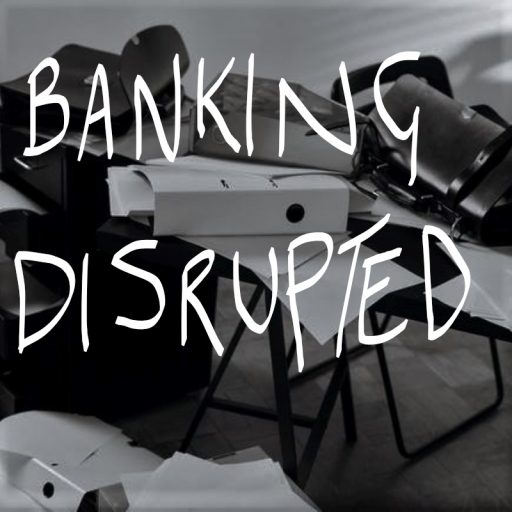The world of customer engagement across banking has become increasingly remote, partially fuelled by COVID health and safety concerns, and the need for many banks to save costs by closing branches. According to Which?, since 2015 over 3,300 branches have closed across the UK, with 200+ branches closing in 2020. This trend is expected to continue during 2021 and beyond, where we have already seen TSB and Lloyds announce 164 and 56 bank branch closures across the UK, respectively.
There are several options for engaging with customers as the world of banking becomes more digital, remote and without bricks. But what are the elements that need to be considered when re-thinking how to support the process of doing banking going forward, as this is more than just channel optimisation. Here three considerations are highlighted to start the process of deriving a simple, sustainable, and relevant strategies/approaches for managing virtual-world customer interactions.
Caffeinated Yogic Banking : Your new branch
The way in which consumers use bank branches across the UK varies significantly by region. According to data from finder.com, 25% of customers in the East Midlands had already stopped using branches prior to COVID, in comparison to 17% in the South East. So, a significant number of people still value the branch… including millennials! according to a recent study by Jeffries, respondents in the 18–35 year-old category cited the branch as being an important element in deciding which bank to use.
Much thinking has been undertaken around the branch of the future, with banks like Metro, Virgin Money and NatWest testing several models in this space. Despite these efforts, work on the branch of the future is still finding its feet, with the challenge of needing to balance cost and value to customers. The concept of community hubs is still a more favoured approach by many traditionalists, especially as hubs can be crucial for advisory functions as opposed to supporting more standard banking interactions. But if we are to think about customer-centricity, surely it is better for banks to go where people hang-out as part of their daily lives. So banking is not just about the academic omni-channel, it can exist where it needs to be; namely (post COVID restrictions being lifted) in places like:
- Co-Working places like WeWork, Impact Hub, or Your Alley
- Yoga/Fitness studios
- Coffee Bars
- Cinemas/Theatres
Creating moments for banking that do not interrupt the day, and can be done conveniently, become key as the traditional single-purpose branches disappear.
Making Mobile Banking more engaging
A staggering 74% of UK individuals now use online banking on a regular basis, via an online web-based portal or a mobile App. This number is even more impressive if we think back to 2010 when only 42% of individuals used the service regularly (Source: Statista). The reasons for using mobile banking have also remained constant over the years. In the US, data in 2018 from Statista showed that 90% of mobile banking usage was to check balances, and 79% to review transactions, which is also comparable to the UK. With more features, like moving money and servicing coming along, the use of these apps is expected to continue.
This is an incredible share of eyeballs! It stands to reason that banks should not lose these interactions as a mechanism for offering more relevant advice, services and know-how that makes the process of managing money easier. But the experience needs to be enhanced by looking at how these interactions/apps are designed, as some of the newer players demonstrate that getting this right pays dividends for driving customer conversation on a continuum. Smartinsights research (2019) shows that outside of simple UI/UX, it is important to also use interruptive messaging well, to grab attention, this is vital when it comes to positioning the latest offers.
These app strategies are key, as research shows that consumers check balances or transactions 2.5 times a day, which is 2.5 daily opportunities to wow!
Smart AI
AI in the capacity of helping consumers, and small businesses, manage their finances on a data-driven basis is key for any of the methods of interaction discussed above. We need to look at AI from two primary perspectives; the ability to inform decisions on optimising financial management, and the ability to protect consumers as more interactions become device based and remote. There is also a balance to be had when is comes to increasing how much of our important financial affairs are carried out digitally, and how to undertake these as securely as possible.
AI can be beneficial for consumers who are not seeking wholesale advice, but just a few pointers to get them moving in the right direction. One of the best cited examples of this is some of the leading work undertaken by Bank of America (BoA).
During 2019, BofA launched “Erica”, and AI chatbot that helped consumers with credit card debt management. Erica uses predictive analytics and algorithmic techniques to help with credit score building, and gives customers access to simple videos that can help them manage repayments. Additionally, Erica also helps with tackling the secondary challenge that AI can help with, which is security, where again tips can be shared on avoiding the common pitfalls when it comes to managing suspicious approaches or activity.
With 16% of all digital fraud coming from Trojan horses or malware (research by Arizent), and in 34% of cases, the fraud taking place on an account on the customers own device (Touch Research), protecting consumers is key and anything that can help to educate is necessary.
This list is not exhaustive but seeks to showcase some agenda-setting-analysis that can help drive more consumer-centric, convenient, and secure frameworks for helping individuals do-banking in 2021 and beyond.




